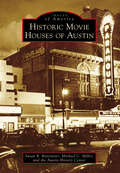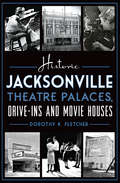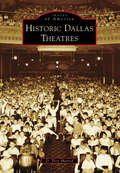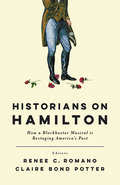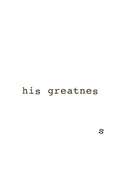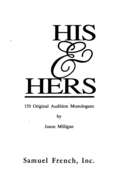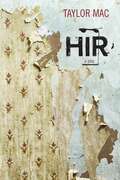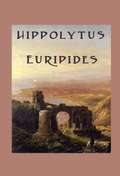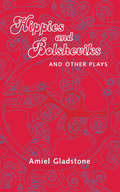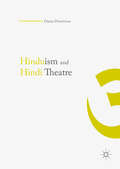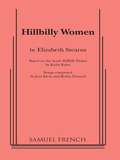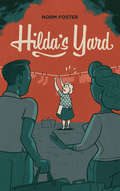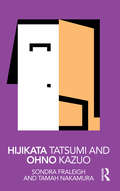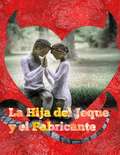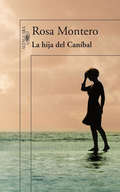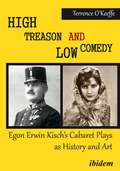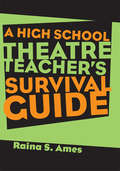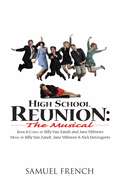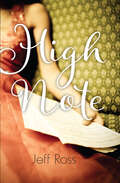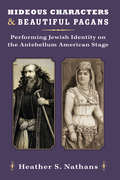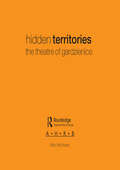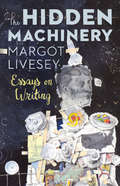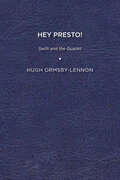- Table View
- List View
Historic Movie Houses of Austin (Images of America)
by Austin History Center Michael C. Miller Susan RittereiserMotion pictures came to Austin on October 10, 1896, debuting at the Hancock Opera House. Since then, movies have continued to enchant, entertain, and inform the citizens of the capital of Texas. And, the places--the movie houses and theaters--where people saw motion pictures played just as important a role in the moviegoing experience as the movies themselves. As the city's population grew and motion picture technology changed, so too did Austin's movie houses, from the first kinetoscope parlor on Congress Avenue to the city' s first four-plex, the Aquarius 4, in southeast Austin. While most of these places are long gone, some withstood the test of time and are still showing movies or have been repurposed for other uses. Through the rich archival collections of the Austin History Center, Historic Movie Houses of Austin explores the stories of these important historic spaces and of the lives of those who were connected with them.
Historic Jacksonville Theatre Palaces, Drive-ins and Movie Houses (Landmarks)
by Dorothy K. FletcherJacksonville's theatre and performance history is rich with flair and drama. The theatres, drive-ins and movie houses that brought entertainment to its citizens have their own exciting stories. Some have passed into memory. The Dixie Theatre, originally part of Dixieland Park, began to fade in 1909. The Palace Theatre, home to vaudeville acts, was torn down in the '50s. The Alhambra has been everyone's favorite dinner theatre since 1967's debut of Come Blow Your Horn. Local author Dorothy K. Fletcher revives the history of Jacksonville's theatres. Lights, camera, action!
Historic Dallas Theatres
by D. Troy SherrodDallas was the show business capital of Texas and much of the South throughout the 20th century. More than 100 theatres served the city's neighborhoods, and Elm Street once boasted more than 15 vaudeville and movie theatres--second in number to Broadway. The quality of the show houses in Dallas were surpassed by few cities and all major, and most minor, Hollywood studios maintained Dallas offices. Notable names figuring in this history include Margo Jones, "Blind" Lemon Jefferson, Karl Hoblitzelle, Baruch Lumet, Bob Hope, Greer Garson, Linda Darnell, Howard Hughes, Clyde Barrow, Gene Autry, Oliver Stone, Pappy Dolson, Jack Ruby, Lee Harvey Oswald, Nicola Rescigno, Don Henley, and Frank Lloyd Wright.
Historians on Hamilton: How a Blockbuster Musical Is Restaging America's Past
by William Hogeland Elizabeth L. Wollman Jeffrey L. Pasley Michael O'Malley Jim Cullen David Waldstreicher Catherine Allgor Renee C. Romano Andrew M. Schocket Brian Eugenio Herrera Joanne B. Freeman Claire Bond Potter Lyra D. Monteiro Leslie M. Harris Joseph M. Adelman Patricia HerreraAmerica has gone Hamilton crazy. Lin-Manuel Miranda’s Tony-winning musical has spawned sold-out performances, a triple platinum cast album, and a score so catchy that it is being used to teach U.S. history in classrooms across the country. But just how historically accurate is Hamilton? And how is the show itself making history?Historians on Hamilton brings together a collection of top scholars to explain the Hamilton phenomenon and explore what it might mean for our understanding of America’s history. The contributors examine what the musical got right, what it got wrong, and why it matters. Does Hamilton’s hip-hop take on the Founding Fathers misrepresent our nation’s past, or does it offer a bold positive vision for our nation’s future? Can a musical so unabashedly contemporary and deliberately anachronistic still communicate historical truths about American culture and politics? And is Hamilton as revolutionary as its creators and many commentators claim? Perfect for students, teachers, theatre fans, hip-hop heads, and history buffs alike, these short and lively essays examine why Hamilton became an Obama-era sensation and consider its continued relevance in the age of Trump. Whether you are a fan or a skeptic, you will come away from this collection with a new appreciation for the meaning and importance of the Hamilton phenomenon.
His Greatness
by Daniel MacIvorThree men, a great American playwright, his trusted and loyal assistant, and a young Canadian street hustler, find themselves together for two days in a hotel room in Vancouver. This is the story about the nature of life in a created world. Inspired by a potentially true story about the great American playwright...
His And Hers
by Jason MilliganHere are 150 original monologues by the author of the popular collections ACTORS WRITE FOR ACTORS, ENCORE! and GOING SOLO. Each features sharply defined characters with clear-cut objectives, designed to showcase individual talents. (No royalty for audition purposes only.)
Hir: A Play
by Taylor MacDischarged from the Marines under suspicious circumstances, Isaac comes home from the wars, only to find the life he remembers upended. Isaac’s father, who once ruled the family with an iron fist, has had a debilitating stroke; his younger sister, Maxine, is now his brother, Max; and their mother, Paige, is committed to revolution at any cost. Determined to be free of any responsibility toward her formerly abusive husband—or the home he created—Paige fervently believes she can lead the way to a "new world order." Hir, Taylor Mac’s subversive comedy, leaves many of our so-called normative and progressive ideas about gender, families, the middle class—and cleaning—in hilarious and ultimately tragic disarray.
Hippolytus
by EuripidesNo play of Euripides is more admired than Hippolytus. The tale of a married woman stirred to passion for a younger man was traditional, but Euripides modified this story and blended it with one of divine vengeance to create a masterpiece of tension, pathos, and dramatic power. In this play, Phaedra fights nobly but unsuccessfully against her desire for her stepson Hippolytus, while the young man risks his life to keep her passion secret. Both of them, constrained by the overwhelming force of divine power and human ignorance, choose to die in order to maintain their virtue and their good names.
Hippies and Bolsheviks and Other Plays: and Other Plays
by Amiel GladstoneHippies and Bolsheviks and Other Plays collects three works by one of Canada's dramatic luminaries.'Hippies and Bolsheviks' is set in that hotbed of hippie idealism, 1970s British Columbia. Young Star stumbles home from a Led Zeppelin concert with a draft dodger and sets in motion a crisis of love and of faith in their idealism against the Establishment.'In Lena's Car', a woman whose marriage is on the verge of collapse reflects on how it got to that point, harkening back to a youth when things were both more simple and more complicated.'>In The Wedding Pool', a group of dissatisfied single friends decide to each contribute fifty dollars a month to a pool to be collected by the first one to marry. But when one of the friends starts dating the bank teller who opens their account, the others are forced to confront their ideas about loneliness and personal responsibility.'The Wedding Pool is a particularly smart and entertaining example of the thirty-something angst genre.' - The Globe and Mail 'If Hippies and Bolsheviks is any indication of the quality of work at this year's playrites Festival, Calgary theatregoers are in for a phenomenal month.' - Calgary Sun.
Hinduism and Hindi Theater
by Diana DimitrovaThis book explores the representation of Hinduism through myth and discourse in urban Hindi theatre in the period 1880-1960. It discusses representative works of seven influential playwrights and looks into the ways they have imagined and re-imagined Hindu traditions. Diana Dimitrova examines the intersections of Hinduism and Hindi theatre, emphasizing the important role that both myth and discourse play in the representation of Hindu traditions in the works of Bharatendu Harishcandra, Jayshankar Prasad, Lakshminarayan Mishra, Jagdishcandra Mathur, Bhuvaneshvar, Upendranath Ashk, and Mohan Rakesh. Dimitrova'a analysis suggests either a traditionalist or a more modernist stance toward religious issues. She emphasizes the absence of Hindi-speaking authors who deal with issues implicit to the Muslim or Sikh or Jain, etc. traditions. This prompts her to suggest that Hindi theatre of the period 1880-1960, as represented in the works of the seven dramatists discussed, should be seen as truly 'Hindu-Hindi' theatre.
Hillbilly Women
by Elizabeth StearnsBased on interviews in Appalachia, this docu drama features seven women who reveal in song and narrative their personal stories of survival against incredible odds.
Hilda's Yard
by Norm FosterLemonade is for people who use the front door. It’s an exciting summer day in 1956 for Hilda and Sam Fluck. Newly on their own since their thirtysomething children Gary and Janey moved out, they are finally ready to relax. Hilda plans to hang her laundry while Sam goes to buy a shiny new television. What could disturb their simple peace? Turns out doors are merely decoration as Gary and Janey literally fall over the fence into the backyard, looking for help out of sticky situations. Gary has lost his job, is enamoured with his new girlfriend, Bobbi, and running from a bookie named Beverly, while the ever-dependent Janey has unexpectedly left her husband. The family careens into an afternoon of calamity, showing them that ultimately they must celebrate how they can be together rather than apart. Norm Foster’s heartwarming and relatable family comedy proves that there will always be a significant weight to an empty nest.
Hijikata Tatsumi and Ohno Kazuo (Routledge Performance Practitioners)
by Sondra Fraleigh Tamah NakamuraNow re-issued, this compact book unravels the contribution of one of modern theatre’s most charismatic innovators. Hijikata Tatsumi and Ohno Kazuo combines: • an account of the founding of Japanese butoh through the partnership of Hijikata and Ohno, extending to the larger story of butoh’s international assimilation • an exploration of the impact of the social and political issues of post-World War II Japan on the aesthetic development of butoh • metamorphic dance experiences that students of butoh can explore • a glossary of English and Japanese terms. As a first step towards critical understanding, and as an initial exploration before going on to further, primary research, Routledge Performance Practitioners are unbeatable value for today’s student.
La Hija del Jeque y el Fabricante
by Sonia Jurado Mohmmed AlsofiEl placer de leer esta novela se halla en que sus eventos se interconectan. Sus palabras escudriñan en las profundidades de la vida، sus experiencias y enseñanzas más humanas. Quizás tu mismo te identifiques como el héroe de la historia. Los personajes fascinan y no podrás quitar tus ojos de sus líneas. Su historia representa la tragedia que se cierne sobre montones de familias y dejan detrás un rastro de dolor causado por personas crueles y sin corazón. Pero lo más importante es el amor que triunfa al final، pues siempre logra crecer y florecer en el gran jardín e la vida، a pesar de sus fantasmas de tradiciones y lo que llaman "clases sociales". Al final los secretos se revelan، las máscaras se caen، los principios se sacuden y los estereotipos muestran sus colmillos mientras la narrativa te arrastra sobre los sentimientos negativos y positivos de la historia. La Hija del Jeque y el Fabricantte es un reflejo de lo que sufre nuestra comunidad y del fuego que la lastima. Es una novela que respeta la mente del lector y lo has disfrutar de sus historias que se entrelazan con palabras simples y personajes atractivos. Una pieza realmente disfrutable que promete atraparte hasta el final.
La hija del Caníbal
by Rosa MonteroLucía lleva diez años con Ramón. Sus vidas transcurren sin pasiones ni tropiezos, hasta el día en que deciden pasar el fin de año en Viena y Ramón desaparece en el aeropuerto. PREMIO NACIONAL DE LAS LETRAS 2017 Lucía no se conforma con que sea la policía quien resuelva la misteriosa desaparición de su marido y, gracias a la ayuda de Adrián, un extraño joven, y del anarquista Fortuna, investiga por su cuenta el paradero de Ramón... De esta forma, algo que en principio parecía un drama, se convierte en una oportunidad para vivir con más intensidad. ** Premio Leyenda 2019 concedido por la Asociación de Librerías de Madrid El crítico literario Santos Sanz Villanueva dijo...«Estamos en la más novelesca de las novelas de Montero, a la vez que, aunque parezca una paradoja, en la más realista, en la que cala con mayor hondura y verdad en los fantasmas, complejidades, limitaciones y grandeza de la existencia.»
High Treason and Low Comedy: Egon Erwin Kisch’s Cabaret Plays as History and Art
by Robert T. O’KeeffeHigh Treason and Low Comedy is the first in-depth treatment in English of E. E. Kisch’s work as a playwright, a phase of his life to which he devoted considerable effort during the years 1920–1925.The translations of his two most successful works for the cabaret stages of Germany, Austria, and Czechoslovakia form the basis of discussions that fit them into several intersecting streams: biographical, historical, and cultural. The plays are Die Hetzjagd, which describes the last day on earth of the infamous traitor, Colonel Alfred Redl, and Die Himmelfahrt der Tonka Šibenice (Galgentoni), which presents the comical, coarse, and, at times, pathetic efforts of a Prague prostitute to argue her way into heaven. The plays are a portal into the world of Kisch’s youth as an enterprising journalist and into his thinking and writing just before he became “the raging reporter” and the star of international reportage. While they reflect the Prague milieu of his youth during the twilight years of the Austro-Hungarian Empire, they also illustrate Kisch’s lifelong critical attitude toward the conservative authorities of society, their derelictions of duty, and their indifference to the welfare of the common man and woman.The book also examines the long afterlife of both of these stories as they were re-created by artists in stage, film, novelistic, and television adaptations, illustrating the theme of what happens when historical materials are transformed into art.
The High School Theatre Teacher's Survival Guide
by Raina S. AmesA reference for high school theatre teachers covering both curricular and extracurricular problems – everything from how to craft a syllabus for a theatre class to what to say to parents about a student's participation in a school play.
High School Reunion: The Musical
by Jane Milmore Nick Degregorio Billy Van ZandtCharacters: 10 male, 7 female Unit Set Welcome to the 30th Reunion of the Class of '79. Everyone you ever loved, hated, had a crush on, or wanted to punch in the face will be there. They are just older, fattier and angrier. Old scores will be settled, old games will be replayed and new (or should we say old) love will be found. And they will all be singing and dancing to an amazing score by Van Zandt, Milmore & Nick DeGregorio including "I Hope They Know Me," "I Want to Bang Miss Blumquist," "(I'm in a) Garden State of Mind," and the show stopping "I'll Never Dance With You." "The downright funniest reunion you'll ever attend" - Two River Times
High Note (Orca Limelights)
by Jeff RossHailey McEwan has many interests--soccer, field hockey, animation. She'd probably never have started singing if her best friend, Crissy, hadn't persuaded her to take singing lessons and join her choir. No one had any idea that Hailey would be such a natural, least of all Hailey herself. A shared love of music--from pop to opera--has been a big part of the girls' friendship, but when the two face off in a competition for a role in a production of The Marriage of Figaro, their closeness turns into a bitter rivalry. Hailey will have to make a tough decision. Is opera as important to her as it is to Crissy? And is landing a role worth losing her best friend?
Hideous Characters and Beautiful Pagans: Performing Jewish Identity on the Antebellum American Stage
by Heather NathansWhile battling negative stereotypes, American Jews carved out new roles for themselves within the first theatrical entertainments in America. Jewish citizens were active as performers, playwrights, critics, managers, and theatrical shareholders, and often tied their involvement in these endeavors to the patriotic rhetoric of the young republic as they struggled to establish themselves in the new nation. Examining play texts, theatrical reviews, political discourse, and public performances of Jewish rights and rituals, Hideous Characters and Beautiful Pagans argues that Jewish stage types shed light on our understanding of the status of Jewish Americans during a critical historical period. Using an eclectic range of sources including theatrical reviews, diaries, letters, cartoons, portraiture, tax records, rumors flying around the tavern, and more, Heather S. Nathans has listened for the echoes of vanished audiences who witnessed and responded to these stereotypes onstage, from the earliest appearance of Shylock on an American stage in 1752 to Jewish theater artists on the eve of the Civil War. The book integrates social, political, and cultural histories, with an examination of those texts (both dramatic and literary) that shaped the stage Jew.
Hidden Territories: The Theatre of Gardzienice
by Cd-Rom Produced By Arts Archives with Alison Hodge Wlodzimierz StaniewskiWlodzimierz Staniewski's group Gardzienice Theatre has established an unparalleled reputation for a sensual and complex performance aesthetic. The work is inspired by the expressive traditions of indigenous culture and the musicality of the natural environment. This is the first full-length articulation by Staniewski himself of this unique director's philosophy and rigorous practice. In this magnificent book and the remarkable cd-rom which accompanies it, Staniewski, with editor Alison Hodge, gives a fascinating insight into his company's principles and techniques. The cd-rom provides: *Extensive video footage of performances and rehearsals *Essays by Staniewski, Hodge, and other contributors *Photographs from the Gardzienice archives *Performance scripts *Director's notes *A full chronology of the company This innovative publication is a landmark for the documentation and appreciation of contemporary performance. It will be an exciting addition to any theatre-lover's bookshelf.
The Hidden Machinery: Essays On Writing
by Margot LiveseyA masterclass for those who love reading literature and for those who aspire to write it. “Read everything that is good for the good of your soul. Then learn to read as a writer, to search out that hidden machinery, which it is the business of art to conceal and the business of the apprentice to comprehend.” In The Hidden Machinery, critically acclaimed and New York Times bestselling author Margot Livesey offers a masterclass for those who love reading literature and for those who aspire to write it. Through close readings, arguments about craft, and personal essay, Livesey delves into the inner workings of fiction and considers how our stories and novels benefit from paying close attention to both great works of literature and to our own individual experiences. Her essays range in subject matter from navigating the shoals of research to creating characters that walk off the page, from how Flaubert came to write his first novel to how Jane Austen subverted romance in her last one. As much at home on your nightstand as it is in the classroom, The Hidden Machinery will become a book readers and writers return to over and over again.
Hey Presto!: Swift and the Quacks
by Hugh Ormsby-LennonIn this book the author reveals how medicine shows, both ancient and modern, galvanized Jonathan Swift’s imagination and inspired his wittiest satiric voices. Swift dubbed these multifaceted traveling entertainments his Stage-itinerant or “Mountebank’s Stage.” In the course of arguing that the stage-itinerant formed an irresistible model for A Tale of a Tub, Ormsby-Lennon also surmises that the mountebank’s stage will disclose that missing link, long sought, which connects the twin objects of Swift’s ire: gross corruptions in both religion and learning. In the early modern medicine show, the quack doctor delivered a loquacious harangue, infused with magico-mysticism and pseudoscience, high-astounding promises, and boastful narcissism. To help him sell his panaceas and snake-oil, he employed a Merry Andrew and a motley troupe of performers. From their stages, many quacks also peddled their own books, almanacs, and other ephemera, providing Grub Street with many of its best-sellers. Hacks practiced, quite literally, as quacks. Merry Andrew and mountebank traded costumes, whiskers, and voices. Swift apes them all in the Tale. Published by University of Delaware Press. Distributed worldwide by Rutgers University Press.
